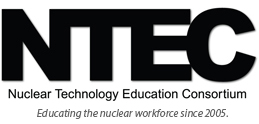N15: Severe Accidents
This unit aims to:
- Contextualise severe accidents in the basic principles of a safety case and provide a history of how the field developed from the early Chicago Pile experiments.
- Establish a grounding in aspects of thermal-hydraulics, thermodynamics and material science that are relevant to severe accidents.
- Introduce the fields of fission product release mechanics, chemistry and aerosol physics.
- Provide an overview of the environmental consequences of a nuclear severe accident.
- Introduce some of the methods used in industrial analyses of severe accident transients.
- Provide an appreciation of the inherent uncertainties of a severe accident.
Brief description of the unit
This unit offers an introduction to nuclear severe accidents for light water reactors. The course begins by introducing basic safety principles and the history of severe accidents before providing a grounding in thermal-hydraulics and thermodynamics that will be relevant to understanding severe accident phenomenology. The physics and chemistry of a typical severe accident transient is then covered in detail following a chronological order, which extends from a core uncovery event, clad oxidation, core melt down to the breach of the Reactor Pressure Vessel. Ex-vessel severe accident phenomena are also covered in the course, which extends to environmental consequences. The unit will also include an overview of some of the tools and codes available and widely used within the nuclear sector and will enable the student to join industry with a solid background in severe accident phenomenology and safety approach.
Intended Learning Outcomes
| Describe and explain the physics and chemistry phenomena that are expected to occur in the nuclear power plant if sustainable cooling of the core cannot be re-established. |
| Balance the positive and negative aspects of some severe accident phenomena in terms of the different risk outcomes. |
| Solve practical problems through calculation and / or deduction in order to estimate or bound plant responses or consequences. |
| Interpret phase diagrams and apply a basis in material science in order to provide insight into material behaviours in a degraded core environment. |
| Apply an understanding of thermal-hydraulics and fluid mechanics in order to provide insight into the thermal behaviour of a degraded core. |
| Compare and contrast prospective severe accident outcomes through an understanding of the phenomenology and apply deduction based on different initial conditions. |
